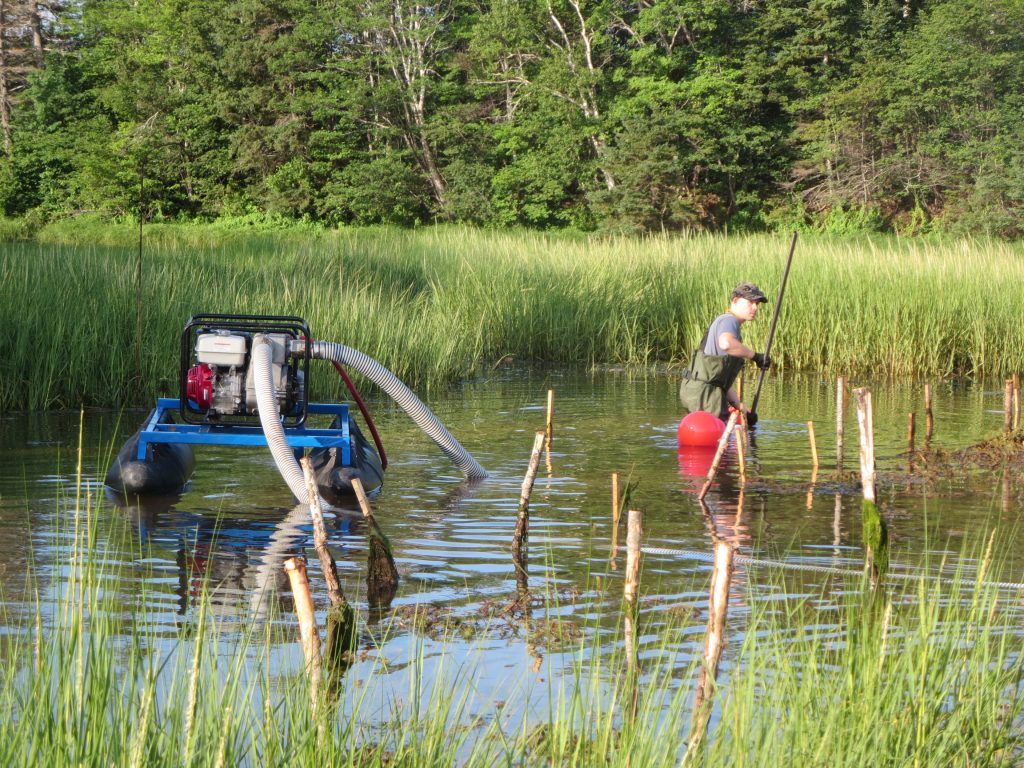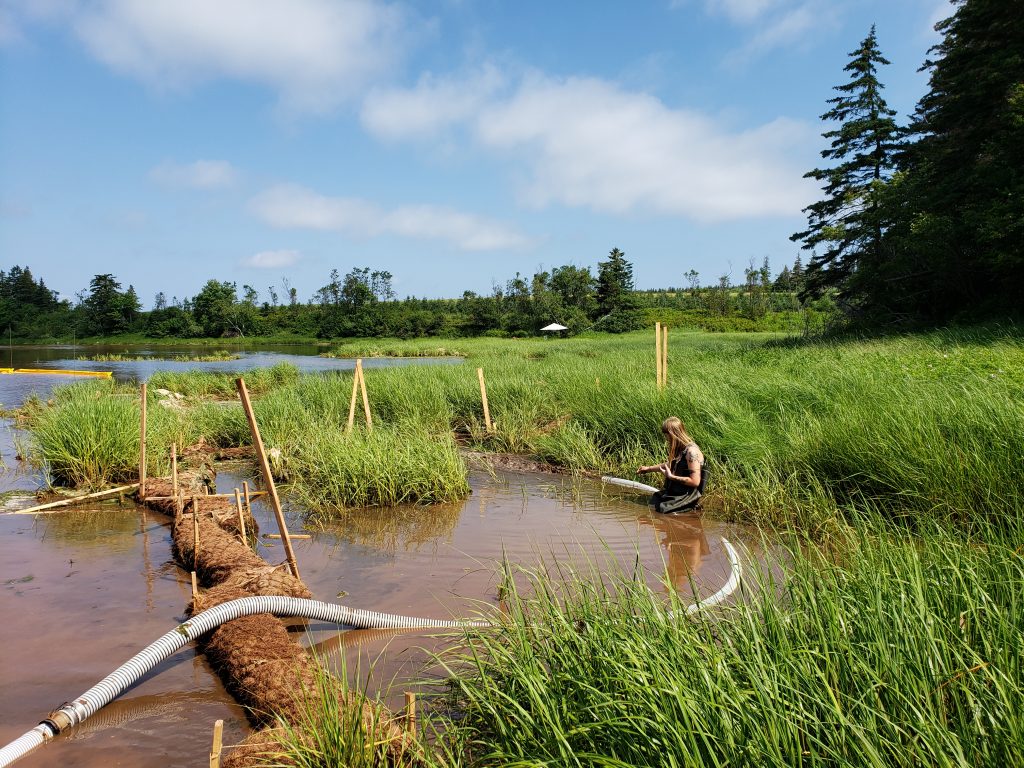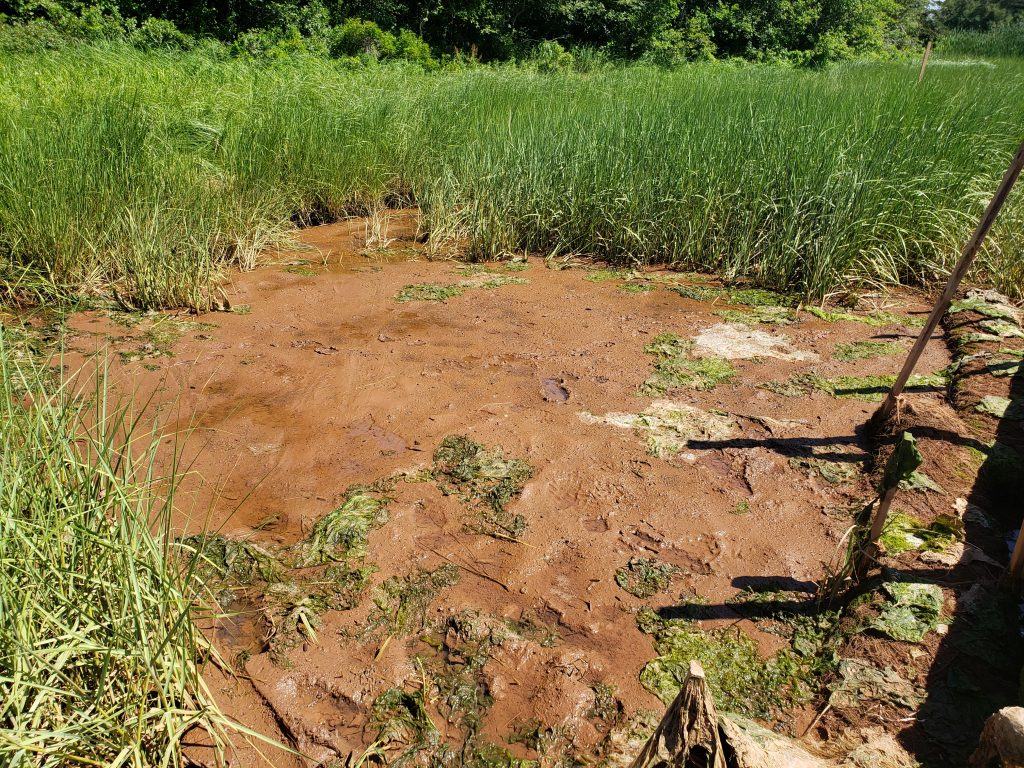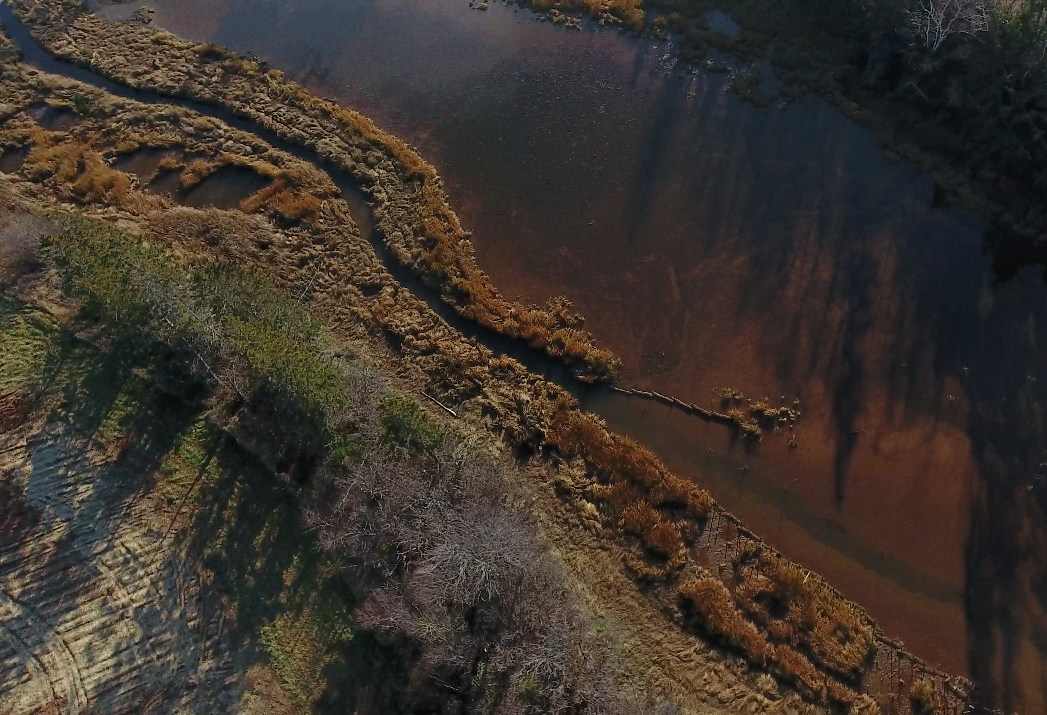Coastal Restoration Fund
The PEI Watershed Alliance received funding through Fisheries and Oceans Canada as part of the Coastal Restoration Fund. This project is an island-wide project focused on improving habitat within estuaries and migratory corridors for anadromous species such as Atlantic salmon and char (such as brook trout).
Kensington North is one of many watershed groups partnered on this project. Our portion of the project involves improving fish habitat in the streams of Hunter’s Creek and Baltic River (Darnley Basin watershed), and also in the estuaries.
Background
Most of the streams in the Kensington area are laden with over a hundred years of silt from heavy agricultural land use and a low amount of tree cover in our watershed. Over time, this sediment makes its way downstream and ends up in the estuary.
The stream deposits the sediment as it flows into the estuary and slowly builds new banks that develop into salt marsh and creates a longer stream channel.
Improving Fish Passage and Building New Salt Marsh
With the use of a mini-dredger, Kensington North has begun to create a deeper stream channel to improve fish passage. This mini-dredger uses an agitator, drawing water from the estuary and shooting it out of a nozzle to agitate sediment on the estuary floor. This suspended sediment is then suctioned up and sprayed out of a hose in strategic locations. By displacing this sediment, we are deepening the stream channel for better fish passage, and allowing more water to flow, flushing sediment along the stream bottom.


The displaced sediment is pumped into enclosures Kensington North has built from natural materials. We have trialed different materials to build our enclosures, including spruce boughs laid in a brush mat, spruce boughs as a perimeter border, jute bags filled with clam shells as a perimeter border, and coconut coir logs as a border.

After the newly deposited sediment settles out in our enclosures, we plant the area with salt marsh cord grass, Spartina alterniflora, to create new salt marsh habitat.





